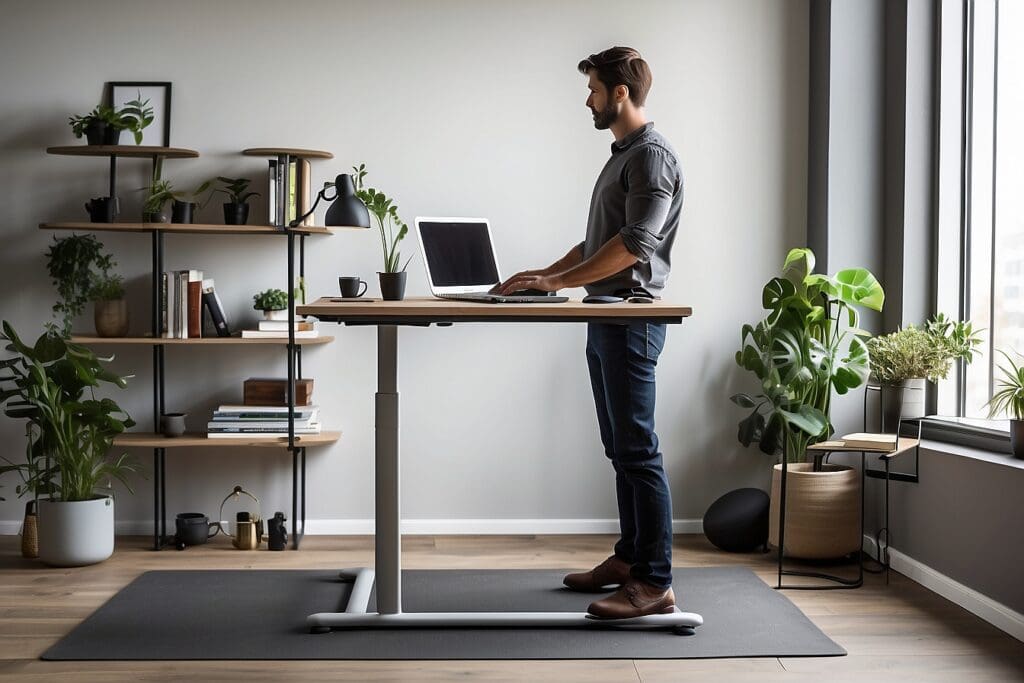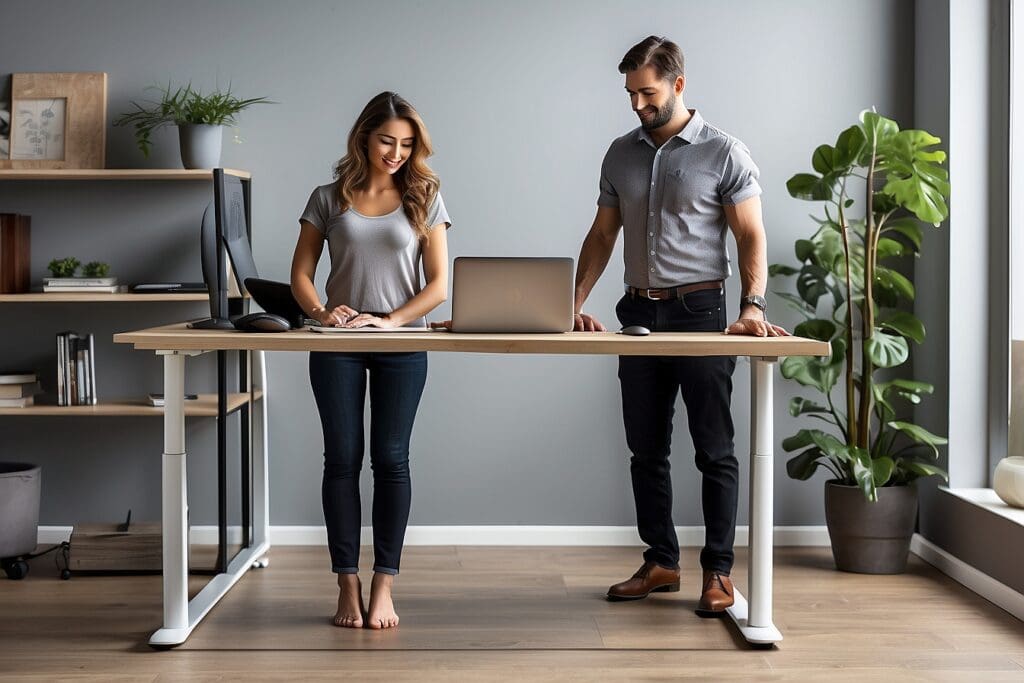For many people, going to work means sitting at a desk from at least 9 AM until 5 PM. Since most of us inevitably slouch at our desks, the result of sitting for eight hours each day is knots in our shoulders and pain in our lower backs. Here’s where the standing desk comes in, with the promise to relieve us of our tight, stiff backs. But, are standing desks just a fad, or do they truly have health benefits?
History of the Standing Desk
 i
i
Ernest Hemingway typing on his standing deskLike with many trends, the standing desk is by no means a 21st century idea. In fact, many offices in the 19th century were furnished with communal standing desks, rather than sitting desks for each employee. Many notable people used these types of desks, such as Thomas Jefferson, Ernest Hemingway, and Winston Churchill. In Papa Hemingway: A Personal Memoir, A.E. Hotchner describes Hemingway’s study in his Havana, Cuba home: “He never worked at the desk. Instead, he used a stand up work place he had fashioned out of a bookcase near his bed. His portable typewriter was snugged in there and papers were spread along the top of the bookcase on either side of it.”1 Going back in history even further, Leonardo Da Vinci designed new inventions at his standing desk, while Napoleon Bonaparte used his for strategic military planning. To work at a standing desk was even considered a sign of prestige and wealth.2
Benefits of Using a Standing Desk

Dr. James Levine, an endocrinologist at the Mayo Clinic in Rochester, Minnesota, warns that sitting is the new smoking. Levine states, “The way we live now is to sit all day, occasionally punctuated by a walk from the parking lot to the office. The default has become to sit. We need the default to become standing.” Levine even suggests that going to the gym after work will not erase the negative impacts of extended sitting.3
Cue the standing desk. First, standing while you work reduces the risk of obesity because it increases the amount of calories a person burns per hour by 50. In addition, by already standing you increase the likelihood of moving around throughout the workday. For instance, if you are already standing you are probably more likely to walk to a colleague’s desk to ask them a question rather than just email them. A study Levine conducted showed that even with the exact same diets and exercise regimens, some participants still gained weight, while other participants did not. Sensors stitched into underwear to show every movement illuminated the differing factor: those that did not gain weight during the study were the ones that, on average, moved around 2.25 more hours per day than the participants that gained weight.4
Second, sitting for extended periods of time has been connected to reduced effectiveness in regulating glucose levels in the bloodstream, which can lead to type II diabetes. Therefore, for those who are already at risk for type II diabetes, monitoring the amount of time spent sitting could be an important turning point.5 Risk of cardiovascular disease has also been linked to extended periods of sitting. Researchers found that adults who spent more than four hours per day sitting in front of some type of screen had a 125% greater chance of cardiovascular-related health issues, such as chest pain and heart attacks, than those adults who spent less than 2 hours sitting in front of a screen.6
Fourth, research has shown that an increased risk of certain types of cancer is possibly linked to excessive sitting. A study from 2011 estimated that excessive sitting could be responsible for 49,000 cases of breast cancer and 43,000 cases of colon cancer in the United States each year. Even with these results, researchers are still working to figure out if there is a direct relationship between sitting and cancer or if those results are from related factors.7
Lastly, in 2010, an Australian study concluded that for each extra hour their participants spent sitting daily during the seven years of the study, the participants’ chance of dying during the study increased 11%. This increased mortality risk is of course related to the increased chance of obesity, diabetes, cardiovascular disease, and cancer.8
How to Use a Standing Desk
There are certain situations, such as driving, where standing is obviously not an option (yet!). However, choosing to use a standing desk at work is one of the most direct and easiest ways to cut down on the number of hours you spend sitting each day. Here are a few tips on how to convert to a standing desk lifestyle:9
- While it may be tempting, do not buy an expensive standing desk until you actually get into the habit of standing.
- To ease into the practice, choose a few tasks that you will always do standing instead of sitting, such as making phone calls or answering emails.
- Drink more water to keep you hydrated and getting up more frequently to walk to fill up your glass and to go to the bathroom.
- For the first several days, try to make your overall standing time about an hour each day. The next several days, try to stand for two hours each day, etc. The hours don’t have to be consecutive. It is important to ease your body into standing more and more over time. Eventually you will be standing for a majority of the day, however, you should not stand all day, some sitting is good for you! Remember, movement is necessary; standing still in one position all day is NOT good for you.
- If you have a laptop, or something equally portable, start off by just using boxes instead of buying a fancy desk.
- Make sure your screen and keyboard are at the appropriate heights. To figure out which heights are right for you, stand up straight and bend your elbows so that your forearms are parallel to the ground. Wherever your hands are is where your keyboard should be and wherever your eyes are looking is where your screen should be. This will help you avoid neck and back pain.
- If you have a laptop, buy an attachable keyboard, so that the keyboard can be at the correct height.
- As stated earlier, make sure to shift your weight from foot to foot; static standing is also not beneficial. Listening to music while you work can help.
- Wear comfortable shoes or even go barefoot. You can also get a standing mat to make your experience more comfortable.
- Take breaks so that you don’t burn out on standing and give up on the practice.
- Remember to not get discouraged if the transition to standing is slower than you want it to be. Even experienced standing desks users tend to only stand for about 80% of their workday.10
Here’s to standing for better posture and a longer, healthier life!





